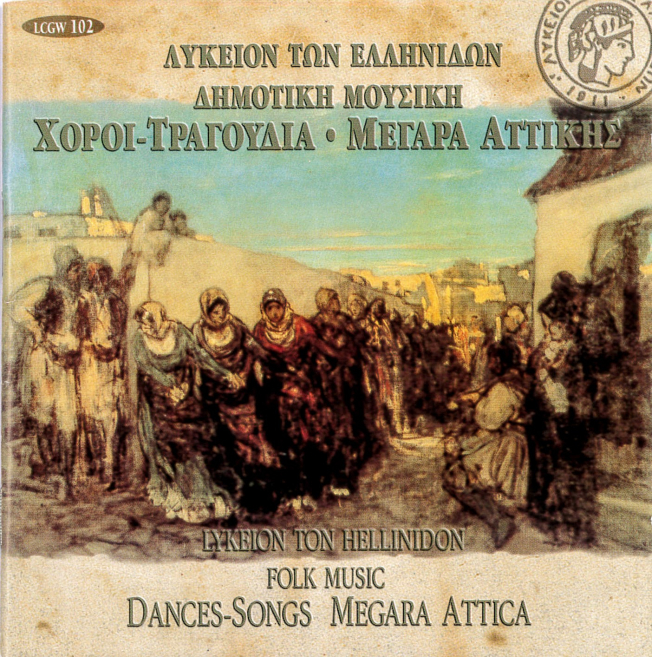

Ever since antiquity Megara and the region surrounding it - Megaris or Megariki - were rich in oil, cereals and wine.
The houses, there, were the best in Greece (Isocrates: On the Peace, 117), and the inhabitants were fond of good food and drink (Diogenes the Cynic, Tertullianus Apologeticum, 39, 14).
The same picture is presented, many centuries later, by the French diplomat and traveler, Pouqueville: “Megara is a prosperous place, with well-built and clean houses”, he writes in his 5-volume “Voyage en Grèce” (1820 edition). And he goes on to describe characteristic scenes from a festive gathering he witnessed from the terrace of the house where he was a guest: The torch-lit terraces of other houses, the stentorian singing and shouts of the merry-makers, the lyres and tambourines, which accompanied the singers, the tipsy guests, who, after three days of carousing, drank wine out of their shoes.
A few decades later, during Easter 1899, John Ward, gives an enthusiastic description of the dances and of the skill of the dancers of Megara, a tradition which is carried on to this day.
In this prosperous land, with the sturdily-built houses, the jolly gatherings and festive holidays, there settled - towards the end of the 18th century - a builder and popular violin-player called Ilias Diliyannis, from the village of Langadia in Gortys, in the Peloponnese. Here, in Megara, he married and raised a family, and, when he died, he was survived not only by his fame as the best violinist in the region, but also by twenty descendants, who also became popular musicians: violinists and lute-players, who kept alive the musical tradition in Megara form the end of the 18th century to this day: a span of almost two centuries. Two of these descendants: Iakovos Ilias (violin) and Thomas Ilias (violin) are heard in this record. (The name Ilias comes from the name of the founder of the musical clan, Lias Diliyannis: Lias = Ilias.)
The love of the people of Megara for folk music is attested by the great number of their popular music groups. In 1925, there were more than ten zygiès of violin and lute and 4 zygiès of pipiza and daouli. The first type mainly performed at indoor festive events, the latter for open-air celebrations. In more recent years, after the second world war, the folk songs and dances of Megara are accompanied by the zygia violin - lute.
The style of the Megarite song and the manner in which it is played is very similar to that of the island melodies. This is largely due to the geographic position of Megara: situated not far from the sea, between the Peloponnese and Central Greece, with Pachi as its seaport, and carrying on a lively trade with the surrounding country, it was only natural that it should have come under the influence of the musical style of the islands. And we must note that the instruments which were always more favoured by the Megarites were the violin and lute, that is the island zygia, and not the pipiza and daouli of continental Greece.
The songs and dances of this record represent characteristic folk melodies of Megara.
Fivos Anoyanakis
1. Ta roussalia (Easter carols) 2.22
2. O Hatzichristos (Instrumental) 2:30
3. O Loulouvikos (Couplets) 2:02
4. To mikro mou (Couplets) 2:38
5. Kangeli Lepeniotiko (Couplets) 2:15
6a. Simera lambi o ouranos (Wedding song) 2:32
6b To papazi (Wedding song) 1:52
7. S' afino tin kalinichtia (Wedding song) 3:10
8. Lambri Kamara (Couplets) 4:23
9. Tis triandafillias ta filla (Couplets) 3:07
10. O Papiris (Instrumental) 1:25
11. Tora ta poulia (Wedding song) 3:28
12. Monia-ne-na (Couplets) 2:31
13. Antikristos (Karsilamas - Instrumental) 3:48
Violin: I. Ilias, A. Economakis, Th. Ilias
Lute: St. Andrianos
Sandouri: E. Samouris
Lute: P. Kallipetsis
Pipiza: D. Koroyannakis
Daouli: E. Kasimatis
Song: D. Ilias, J. Mourtzoukos, D. Stambolas, J. Kikidis, St. Papafragkos, V. Stergiou, G. Athanasopoulos, Th. Ilias, M. Louka, E. Michalarou, S. Frangou
Open air recording Megara, Attica, September 1975
Tape Recorder: TEAC A 3340
Recorded by: J. Sygletos
This edition is an exact reproduction of LP LCGW 102: FOLK MUSIC, DANCES - SONGS, MEGARA ATTICA







